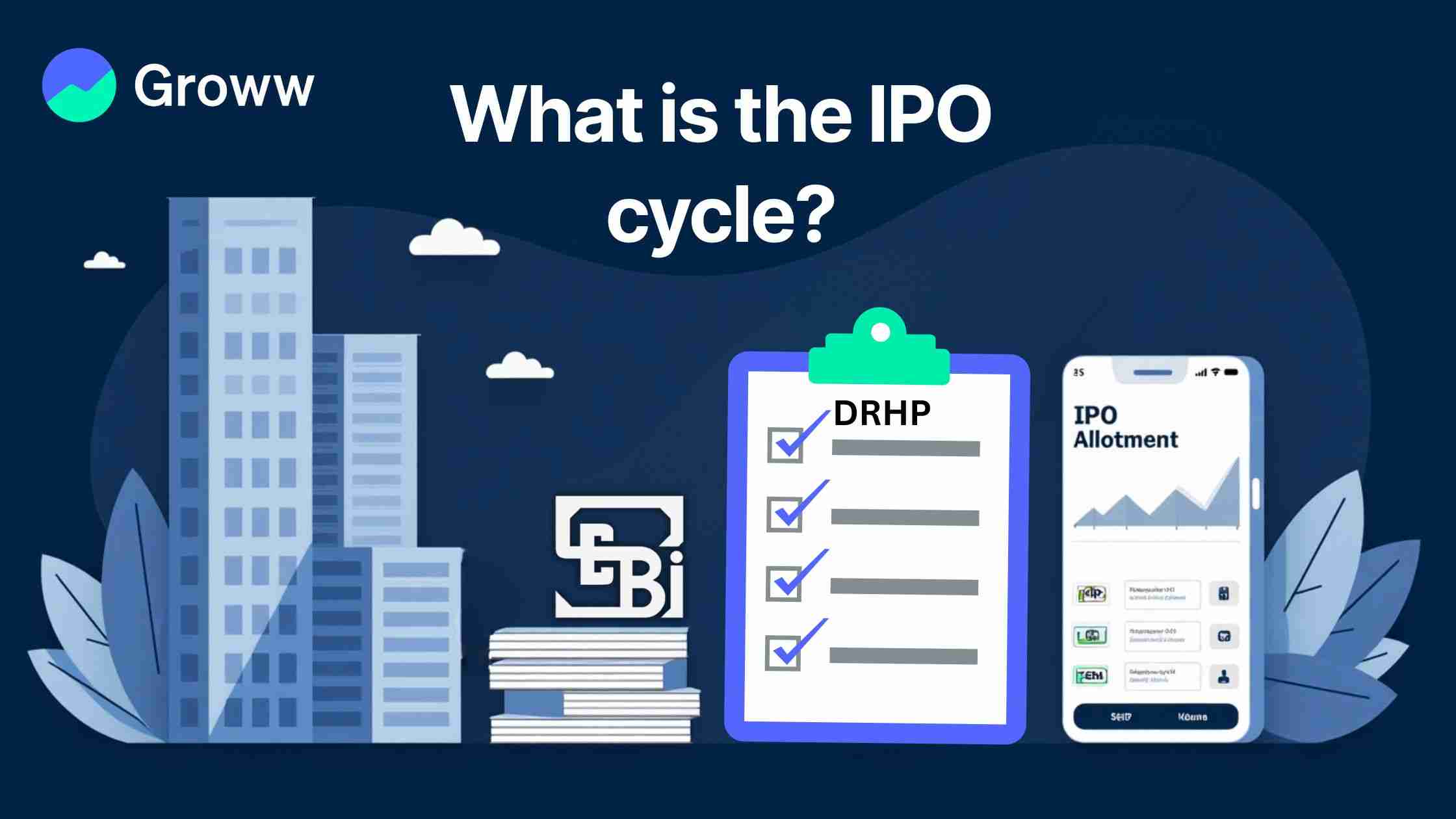What is IPO Cycle?

When a private company decides to go public, it launches an IPO (initial public offering). Listing on the stock exchange involves several steps and stages, which is generally termed the IPO cycle.
This process is carefully regulated and requires meticulous planning to ensure transparency, fairness, and success for the company and its investors.
In this blog, we shall take a closer look at how the IPO cycle works, from the initial stages when a company decides to go public to the risks investors face when applying for an IPO.
What is the IPO cycle?
The IPO cycle refers to the series of steps a company follows while transitioning from being privately held to being publicly traded on a stock exchange.
A Detailed Understanding of the IPO Cycle:
Pre - IPO Stage
Appointment of Key Intermediaries
The IPO preparation starts with the appointment of key intermediaries, such as investment bankers, registrars, underwriters, market makers, and legal advisors. These entities are responsible for managing the overall IPO process.
Preparation & DRHP Filing
For the next pre-IPO step, the company and its key intermediaries submit a Draft Red Herring Prospectus (DRHP) to SEBI (Securities and Exchange Board of India) and the relevant Stock Exchanges (NSE/BSE).
The DRHP contains all details about the company’s business, financials, management, objectives of the IPO, how the funds will be used, etc.
Public Comment Period
The DRHP is made available on the SEBI and Stock Exchanges website for at least 21 days. During this period, the stakeholders can submit their comments and feedback on the document.
Marketing and Publicity Activities
Once the DRHP is filed, the company can initiate publicity and marketing campaigns according to Schedule IX of the ICDR Regulations.
In-Principle Approval from Stock Exchanges
The Stock Exchanges review the DRHP, grant in-principle approval for the listing and inform SEBI about the same. During this stage, SEBI may seek clarification on specific aspects of the DRHP from the lead managers.
SEBI’s Issues Observation Letter
After reviewing the DRHP and any clarifications, SEBI issues its Observation Letter within 30 days. This document is issued in response to the DRHP indicating that the IPO has received clearance and has a validity of 12 months.
The timeline is based on satisfactory clarifications or in-principle approval from the Stock Exchanges.
Updated DRHP (UDRHP) Filing
Following the receipt of SEBI’s Observation Letter, the company has up to one year to file an updated DRHP (UDRHP) addressing SEBI's comments. The UDRHP is again reviewed by SEBI to ensure all the adjustments are made.
Filing of the Red Herring Prospectus (RHP)
After the DRHP is updated and approved, the issuer submits the Red Herring Prospectus (RHP) to the Registrar of Companies (RoC). At this stage, the issuer must also announce the price band of the issue, ensuring it is done at least two days before the issue opens.
Advantages of Participation in IPO Cycle
Below are some of the advantages of participation in the IPO cycle.
-
Early Investment Opportunity
The investors who receive IPO allotment can have early access to company shares at a lower price. If the IPO gets listed at a premium, they can make significant profits at the ground level.
For instance, Bajaj Housing Finance's IPO, which was launched in September 2024, doubled investors' money. From the issue price of ₹70, the shares were listed at ₹150.
In short, for individual investors, participating in an IPO allows them to own shares of companies with strong growth potential.
-
Brand Recognition
When a company goes public, it gets significant attention from media houses and the general public. This ultimately results in increased brand recognition, improved customer trust, and greater competitive positioning.
-
Exit Path For Early Investors
IPO offers an exit strategy for early investors, venture capitalists, and founders, who may have been tied up for years. Through the offer for sale (OFS) component, they can sell shares to the public and realise returns on their initial investments.
Challenges of Participation In IPO Cycle
Along with advantages, there are some challenges to participation in the IPO cycle.
-
Regulatory Hurdles
Private companies need to deal with several regulatory compliances before launching an IPO. SEBI has a long list of rules and processes that must be followed.
At times, the market regulator may reject the DRHP due to incomplete disclosures, non-compliance, or unclear risk information. Then, the company has to make corrections and refile it, which delays the IPO process and increases costs.
Also, even after a company is listed on the stock market, it must follow SEBI’s guidelines. Failure to do so results in hefty fines or the company even being delisted from the exchange.
-
Market Uncertainty
A company’s listing performance is highly influenced by market conditions and investor sentiment. Even good companies with strong financials may see poor listings in a bearish market.
-
Lock-in Period for Anchor Investors
Anchor investors are allotted shares in an IPO before it opens to the public. These investors are subject to a lock-in period during which they cannot sell their shares.
Once the lock-in period ends, some anchor investors may sell their shares. Such exits create volatility in the stock, primarily if a large chunk of shares is sold in one go.
-
Overhyped Valuations
Not all IPOs are priced fairly. Sometimes, companies launch their IPOs at high valuations. In such cases, the stock price is driven more by public excitement than actual business performance and numbers.
Once the excitement fades and the shares start trading on the stock exchange, the stock may open below the issue price, fall sharply after listing, or lead to losses for early investors.